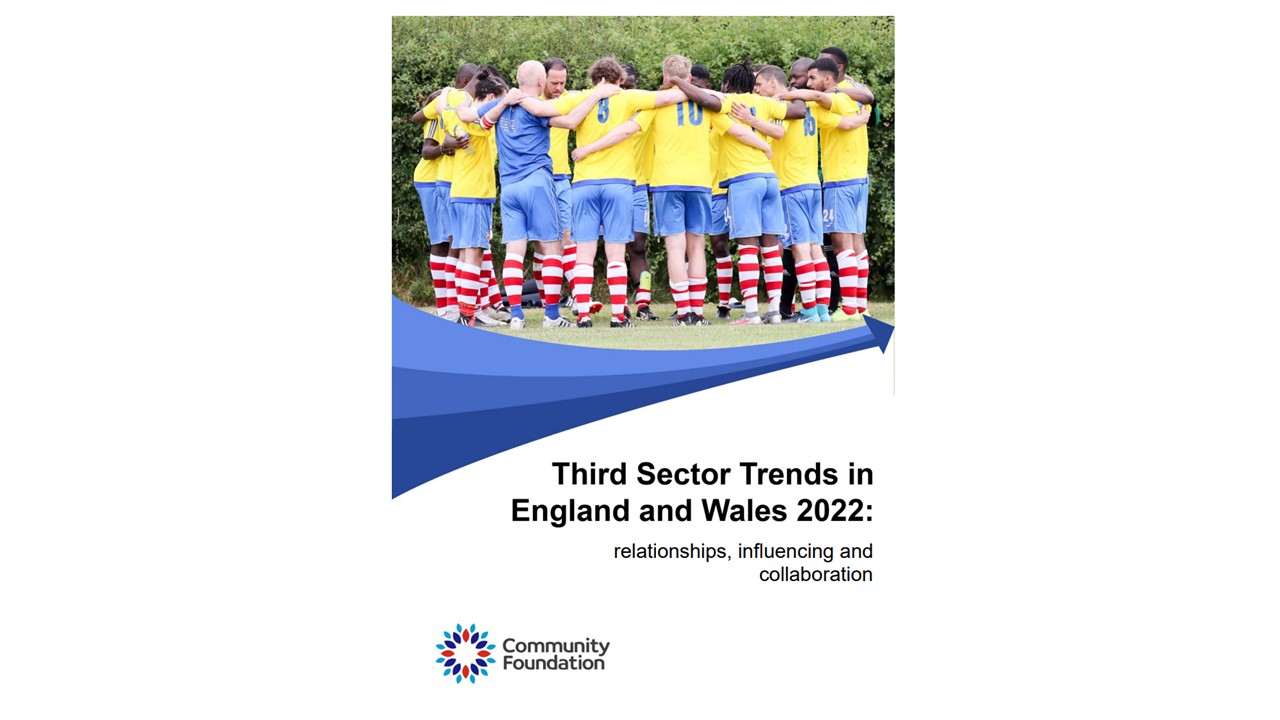This is the fourth report from the Third Sector Trends study of England and Wales in 2022. In 2022 the study was supported by Community Foundation Tyne & Wear and Northumberland, Power to Change, Barrow Cadbury Trust and Millfield House Foundation.
Assessing the whole sector’s value in England and Wales involves more than simply ‘adding up’ the contributions of individual organisations. That is, firstly, because the value of the sector’s social productivity is greater than the sum of parts; and secondly, because value is not ‘owned’ by individual organisations – but rather, is shared.
This report shows that Third Sector organisations can rarely, if ever, achieve everything on their own. Most organisations, large or small, work together well – but rarely to the point that they lose their independence. Informal neighbourly relationships are the most common: 73 per cent of TSOs do this. But there is a lot of semi-formal complementary activity too – where organisations work together towards shared goals (51% of micro TSOs get involved in such work, rising to 82% of the biggest organisations).
There is a great deal of engagement with local social and public policy where TSOs attend formal meetings or contribute to consultations (including 61% of micro organisations rising to 84% of the biggest TSOs). A good deal of active ‘behind-the-scenes’ interaction to influence policy goes on too (rising from 36% of micro TSOs to 56% of the biggest).

National government is more likely to be pleased than perturbed that the Third Sector gets involved in local social and public policy debates. But over the last decade, while respecting the right of charities to campaign, Ministers and the Charity Commission have become concerned about ‘illegitimate’ political activities.
Evidence on the incidence of campaigning, until now, has been extremely limited. In 2022 Third Sector Trends sought to find out how widespread political engagement is by asking participants, firstly, if they ‘tend to steer clear’ of politics. Percentages of TSOs agreeing that they steer clear of local politics rises from 67% of the biggest organisations to 80% of the smallest.
A second question asked if organisations ‘campaign to further the interests of our beneficiaries’ – which is judged to be a legitimate activity according to the Charity Commission. Around a third of micro TSOs (36%) campaign – rising to 71 per cent of the biggest organisations).
In response to the publication of the latest report, Rob Williamson, Chief officer of the Community Foundation said:
“There’s talk in all sectors about the value of collaboration and this report shows the depth and importance of the sector’s internal and external relationships. These relationships maintain the third sector’s social impact because, collectively, the sector as a whole is worth more than the sum of the parts. It’s not all about formal partnership working, complementary action is vital too – where organisations stay independent but work collectively towards a common purpose.”
As the report’s author, Professor Tony Chapman of Durham University said:
“Becoming agitated about illegitimate political activities of charities, like as not, reveals as much about the government’s political insecurities as it does about the sector itself: not least because the enormous range of political opinion and activity within the Third Sector is so complex that it defies meaningful categorisation.
“The Third Sector is full of strong-willed people, who are committed to the causes that they pursue. And rarely is the sector shy of raising its objections when injustices are thought to have been committed. Surely, sustaining productive relationships between government and the third sector is much more important to Ministers when trying to achieve national, regional and local objectives than fussing about tweets.”
Laura Seebohm, Chair – Millfield House Foundation, said:
“It has never been more important for voluntary, community and social enterprise sector organisations to engage in policy and campaigning activities, on behalf of the communities they work with. It is therefore heartening to see sector organisations finding time and energy, against the odds, to advocate for wider change.”
The report is available to download here.
And a short blog is available which captures key controversies arising from the report which can be accessed here.
All reports from Third Sector Trends in England and Wales 2022 can be found at the Community Foundation’s website: Voluntary Third-Sector Trends | Community Foundation

One thought on “Third Sector Trends: relationships, influencing and collaboration”
Comments are closed.